| If you follow the road southwards from Askyfou you will
soon come to the village of Imbros, situated on another small plateau.
|
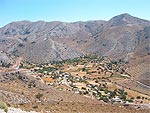
|
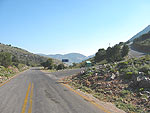 |
Before the village -
at the road leading to Asfendou - you pass through an area called Fantása
which should be haunted by ghosts and evil spirits.
|
| At the entrance to the village is a double-naved church
to Koimisis tis Theotokou (The Passing Away of Virgin Mary). |
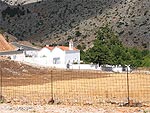
|
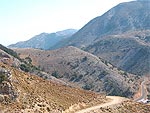 |
At the top of the hill behind the church are some
remains of a Turkish castle. |
|
In the southern part of the village stands another
church to Agios Konstantinos and
Eleni.
|
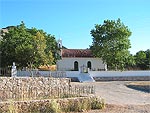
|
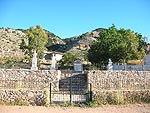 |
Next to the church is a small enclosure with three
busts of well-known village inhabitants plus a memorial tablet for those
who were killed in World War II. |
|
|
|
|
|
| The
inhabitants make a living by sheep-breeding and agriculture (grain and
wine) and some tourism from the visitors to the Imbros gorge.
|
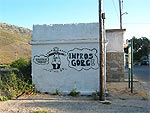
|
|
|
|
|
|
|
| The founders of the
village named it after their birthplace. On the island of Imbros, close to
the Dardanelles in the northeastern Aegean Sea, lived seven brothers, who
were sentenced to death. The Sultan's wife intervened before the sentence
was carried out, so instead of getting killed they were sent into exile.
They went ashore at Loutro a little west of Chora Sfakion and founded
Imbros.
|
| The brothers were
nicknamed Pattakos (patasso = suppress) because of their hot-headed and
violent temper. Later the name became a common surname.
|
| From this family came
among others Manousos Pattakos (Manousakas), who participated in the
rebellion of Daskalogiannis. The rebellion was suppressed in 1771, but 3
years later Manousakas gathered a number of armed men on Askyfou, from
where they went down to Embrosneros on the Apokoronas peninsula to kill
the notable farmer and janizary Ibrahim Alidakis, who had raised an army
in order to purloin the Cretan shepherds' pastures. |
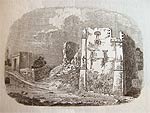
|
|
|
|
|
Alidakis'
"Pyrgos",
from
Robert Pashley´s book |
|
|
|
|
|
|
|
|
|
|
|
|
|


